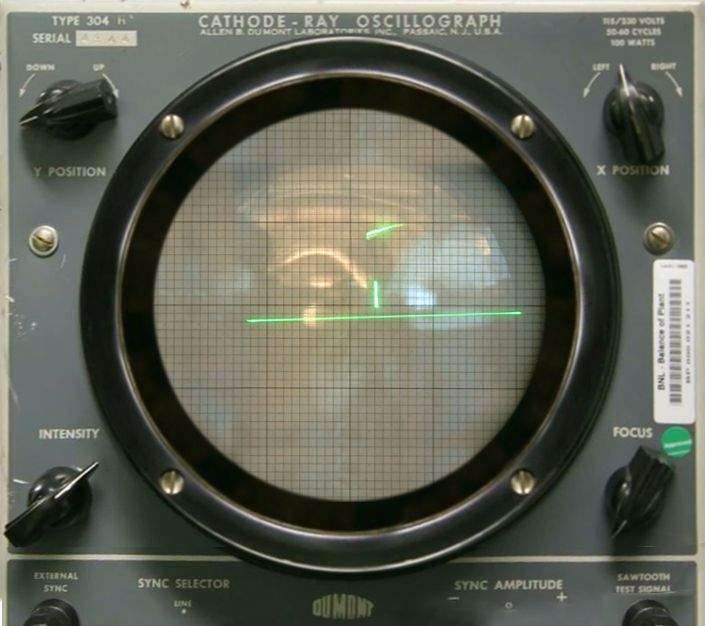
Image Credit Pinterest
The video game is a very important pillar of the modern entertainment industry. At-home gaming is an increasingly popular pastime, with blockbuster names like “Call of Duty” and “Fortnite” captivating audiences.
The video game remains a relatively great invention, though, coming after film and television and evolving rapidly in recent years.
What was the first invented video game? Who invented the first video game? Here we discuss the history of the first video game ever and everything that you must know.
First Video Game
In October 1958, physicist William Higginbottom created the first video game. It was a very simple tennis game, similar to the classic 1970s video game Pong, and it was a big hit at the Brookhaven National Laboratory open house.
About Higginbotham
The inventor of the first video game was born in Bridgeport, CT on October 25, 1910. In 1932, he completed his graduation from Williams College. After completing the graduation, Higginbotham went to graduate school in physics at Cornell University. He served as an electronics technician at Cornell. He went to the MIT Radiation Lab in 1941 to work on cathode ray tube displays for radar systems. He moved to Los Alamos in 1943 to work on electronics for the timing system for the atomic bomb.
How did Higginbotham do It?
In 1948, Higginbotham joined the Instrumentation Group of Brookhaven National Laboratory. He worked as head of that group from 1951 to 1968.
During that time, Brookhaven held annual visitor days in October, during which thousands of people came to tour the laboratory. Higginbotham was responsible for creating an exhibit to show the work of the Instrumentation Division.
Most of the existing performances were dull. Higginbottom thought he could better capture the interest of visitors by making an interactive display. He later recalled in a magazine interview that he thought “it would enliven the place where there would be a game that people could play, and that would send the message that our scientific endeavours have importance to society.”
The instrumentation group had a small analogue computer that could display various curves, including the path of a bouncing ball, on an oscilloscope. It took only a few hours for Higginbottom to think of the tennis game idea, and only a few days to put the basic pieces together. Having worked on displays for radar systems and many other electronic devices, Higginbottom had no trouble designing simple game displays.
Higginbottom made some drawings and blueprints were prepared. Technician Robert Dvorak built the device in about two weeks.
Tennis for Two
After great hard work, the first video game was ready for its debut. He called the game tennis for two.
To adjust the angle of the ball, players have to turn a knob and then press a button to hit the ball toward their competitor. As long as the players pressed the button, balls hitting the court would bounce. When the ball goes into the net or out of the court, players have to press the reset button to begin the next round.
Tennis For Two, the first-ever video game had none of the fancy graphics. The cathode ray tube display showed a side view of a tennis court, represented by only two lines, one representing the ground and one representing the net. The ball was just a dot bouncing back and forth. Players also had to keep scoring for themselves.
The game circuitry was simple, using mostly resistors, capacitors and relays, although it used transistors for the fast switching required when the ball was in play.
The visitors liked it very much. It soon became the most popular exhibition, with people standing in long queues for a chance to play.
The first version, used at the 1958 Visitor’s Day, had an oscilloscope with a small display, only five inches in diameter. The following year, Higginbottom improved it with a larger display screen. They also added another feature: the game can now simulate strong or weak gravity, so visitors can play tennis on the Moon, Earth, or Jupiter.
Tennis for Two was retired after two years. The oscilloscope and computer were repurposed for other uses, and Higginbottom designed a new visitors’ day display, showing cosmic rays passing through a spark chamber.
Higginbotham, who had already patented 20 inventions, did not think his tennis game was particularly innovative. Although he noticed that Brookhaven audiences found the game interesting, he had yet to know how famous video games would later become. Even if he had the plan to patent the video game because he worked in a government laboratory, the patent was owned by the federal government, so he would not have made any money from it. “I never felt like I was doing anything interesting or exciting. However, the long queue of people was not because it was so good, but because everything else was so dull,” he once said.
Tennis for two was almost forgotten for a while. However, Sanders Associates received the first patent for a video game in 1964. Magnavox purchased the patent and produced video game systems in the early 1970s. Competitors seeking to infringe the Magnavox patent became aware of Higginbottom’s first video game and were called to testify, but the case was settled out of court. In 1982 creative computing, Higginbottom became known as the inventor of the video game after an article appeared in the magazine.
Wrapping Up
Higginbottom’s main interest during most of his career was not video games, but nuclear arms control. He served as its first president and executive secretary and helped found the Federation of American Scientists. He died in November 1994, more popular for his video games than his work on nuclear nonproliferation.